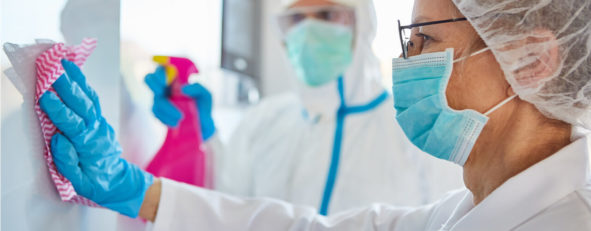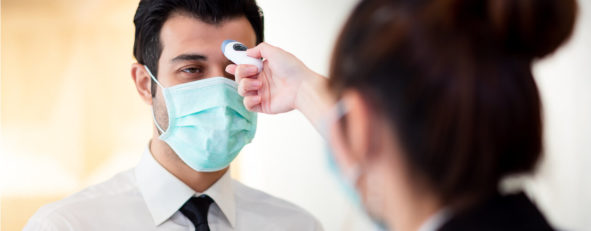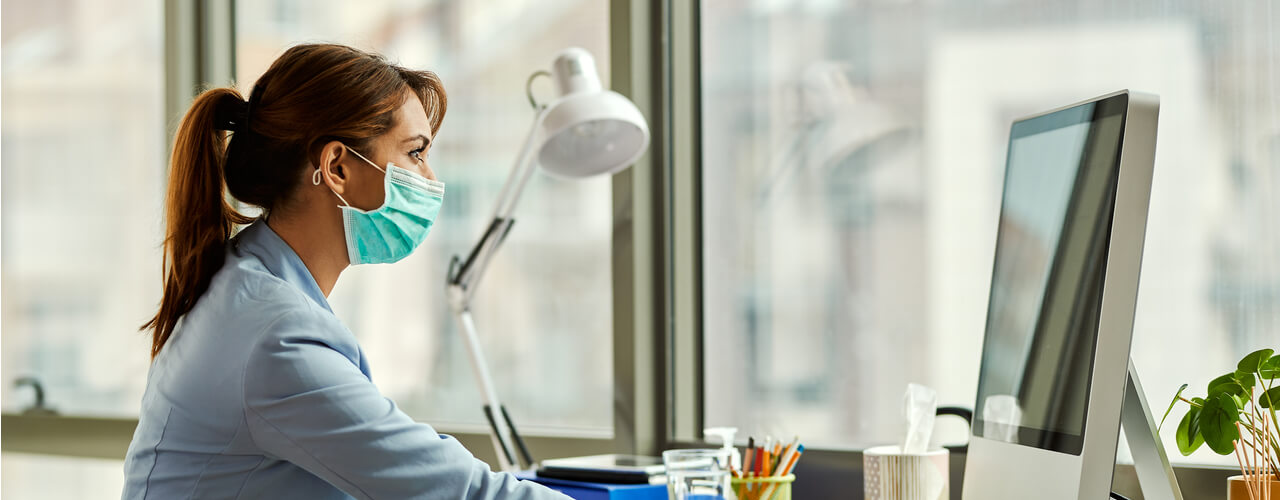As states lift stay-at-home restrictions and allow certain businesses to reopen, organizations across the nation are thinking about bringing their employees back into the workplace. However, before this can happen, several challenges need to be addressed.
As Cushman & Wakefield puts it, “How can real estate owners most effectively prepare their assets for the return of building occupants? And how can employers ensure they are prepared to receive their workforce — and that their employees are prepared for the return — so that the transition is safe, efficient, effective, and aligned to the needs of the organization and the needs of its people?”
In response to these concerns, the company recently released a 30-page manual that compiles insights from more than 53,000 professionals worldwide, as well as partners. Before it released the guide, Cushman & Wakefield contributed to bringing employees back into more than 800 million square feet of properties globally. The handbook, “Recovery Readiness: A How-to Guide for Reopening Your Workplace,” identifies six primary areas of focus to help organizations create a safe return to the workplace. Cushman & Wakefield dubbed these “The Safe Six.”
1. Prepare the Building
Before people can return to a building that has been unoccupied for a significant amount of time, a variety of checks and assessments should be performed. For this, stakeholders — owners, building managers and occupants — need to work together and set clear responsibilities.
Specifically, ensure that certain maintenance procedures are happening right now, when the building isn’t in use. The guide includes a checklist of what to consider in terms of core infrastructure, HVAC and mechanical systems inspection — such as changing filters, flushing the building with fresh air and checking chemical levels in the water.
Also, provide appropriate personal protection equipment (PPE) — such as masks, eye protection and coveralls — to all on-site workers who are preparing the building, and create stations to safely dispose of it. To avoid shortages, closely monitor the availability of PPE, disinfectants and other cleaning supplies.

Source: Shutterstock
2. Prepare the Workforce
The physical, psychological and emotional readiness of employees is perhaps the most important aspect of returning to the workplace. Do your best to mitigate staff anxiety and show workers that your organization cares for them. Empathy is essential during these trying times.
Additionally, because the return will most likely be completed in phases, it’s important to know who will return to the office, why and when. Many roles can be highly productive working remotely, while others need access to equipment and in-person meetings to effectively fulfill their tasks. Keep these differences in mind when deciding which workers will return to the office. Always prioritize employees’ personal health and give special attention to high-risk individuals.
To avoid confusion on day one, conduct online training sessions and provide information and procedures to employees ahead of time. Communication must be clear and frequent so that everyone is aware of the changes designed to keep the workplace safe, and so they all know what to expect and what to do upon return.
3. Control Access
High-traffic areas — entry and exit points, lobbies, shipping and receiving depots, and elevators —require special attention. For instance, you might need to implement control measures like temperature checks and screenings at building entrances, according to local regulations. Furthermore, if possible, reduce the number of entrances and stagger arrival times to avoid long lines of people waiting at the door.

Source: Shutterstock
The entry sequence should feature simple and clear signage so people know where to go. This could include floor stickers identifying social distancing zones, especially in elevators.
In the lobby, install plexiglass shields as needed, especially between guests and reception personnel. Adjust furniture that encourages people to gather in groups or remove it entirely to promote social distancing. Also, place hand sanitizer dispensers in strategic locations.
Meanwhile, separate shipping and receiving depots from general personnel areas. Require staff who handle mail and parcels to wear appropriate PPE, and sanitize the exterior of packages prior to distribution.
4. Create a Social Distancing Plan
Having a good social distancing plan in place after employees return to the workplace will help minimize the risk of a new outbreak.
First, consider how employees get to work. Promote safe means of transportation and, whenever possible, solo transit modes — although this is especially challenging in high-density cities, like New York City. Moreover, encourage employees to wear PPE when using public transportation and to use hand sanitizer when they arrive at the workplace.
At the office, implement social distancing measures, such as:
- designating single-direction foot traffic patterns
- posting signage to direct traffic
- temporarily closing off small spaces and common areas
- removing chairs or desks from every other workstation
- clearly marking where people should sit in conference rooms to maintain the safe, six-foot distance
- installing shields between desks
To show how these measures can be effectively put into practice, Cushman & Wakefield created the “6 Feet Office,” a prototype for the workplace in the time of social distancing.
5. Reduce Touch Points & Increase Cleaning
Maintaining good cleaning and disinfectant practices is paramount to avoid contamination. Therefore, regularly sanitize all work areas — including conference rooms, breakrooms, cafeterias and restrooms — and frequently wipe down high-touch surfaces, such as handles, buttons or switches. Similarly, make disinfectant wipes and other cleaning products available near every workstation for employee use.

Source: Shutterstock
To reduce touch points, install low-touch or touchless technology for printers, light switches and access points around the office. Where possible, keep doors open or even remove them completely. Along the same lines, allow only single-serving food in the common kitchens, and encourage employees to bring their own meals and snacks from home so they can manage them individually.
Bathrooms are also a major concern. Among other things, install hand sanitizer dispensers not just inside the restroom, but right outside the door, as well.
6. Communicate for Confidence
The importance of communication during the transition back into the workplace cannot be overstated. Now, more than ever, foster a trusting and transparent culture in which employees are constantly informed of the plans and procedures put in place, and are given a chance to voice their concerns.
To help workers form new habits, regularly reinforce changes in the work environment by scheduling ongoing training and displaying educational materials around the office. Essentially, don’t just tell employees what to do, but rather help them understand why certain changes need to happen.
Last, but not least, send out surveys, and host Q&As and focus groups to stay up to date on your staff’s views and to ensure that employees feel like they are involved in the process.
In addition to this guide, Cushman & Wakefield created a webinar on the same topic. In it, Recovery Readiness Task Force members Bill Knightly and Despina Katsikakis discuss the “Safe Six,” as well as day one, and address questions from the audience regarding the post-COVID-19 return to the workplace. The firm plans to continue updating its recommendations as it learns from future experience.









